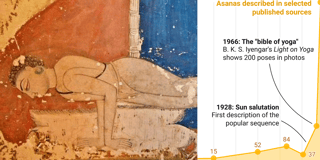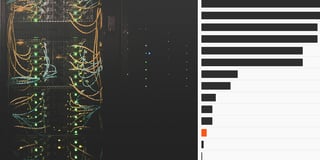Which German party is the most unlucky when it comes to election dates?

Edit September 16, 2021: The charts now show averaged poll results from eight polling institutions, not just from Forschungsgruppe Wahlen. They also make it clearer that the last line shows the poll results, and have tooltips to be easier to understand. You can find the old charts at the bottom of this article.
Welcome to the 200th Weekly Chart 🎉! That's right, we've been visualizing data weekly since 2017. This is Lisa — I'm responsible for the blog at Datawrapper. Today, let's talk about luck, politics, and polls.
"Our polls are so good right now! So many people would vote for our party! If only the federal election was this Sunday... and not in two years." Many members of different parties must have this thought occasionally. The recent rise and fall of the Green party's popularity so close before the German federal election on September 26 made me ask: Which party thinks that the most?
Which German party is the most unlucky when it comes to election dates? Meaning: Which party sees the most polls in their favor before the election, only to then get a mediocre share of votes in the election?
Let's start with the Greens. They're not the most unlucky party in German politics according to Forschungsgruppe Wahlen polls, but they're a very close second place. The Fukushima disaster in 2011 and the Fridays for Future movement in 2019 convinced almost every fifth voter to vote for them... but there just wasn't any federal election in sight where people could have done so:
That's a complex-looking chart, so here's how to read it: Areas above the straight horizontal lines show polls with higher vote shares than the party got at the next federal election. You can almost hear the party members think during election night: "Argh, we polled higher than that for the last four years!"
(Note that these polls are only by one polling institute, Forschungsgruppe Wahlen. My coworker Gregor showed seven years ago that they evaluated two parties, CDU and SPD, more positively than other institutes — so it's more likely for members of these two parties to be disappointed.)
As a party, you want to be pleasantly surprised on election night: "Well, compared with the polls of the last four years, that was a really good result!" This is indicated by the areas below the horizontal lines.
The liberal Free Democratic Party, FDP, could say exactly that most of the time in the past 30 years. They are the luckiest party:
Look at these few areas above the line! So often in the past 30 years, fewer than 5% of polled people said they would vote for the FDP — but only in one election did the party fail to pass the 5% threshold of the popular vote that's needed to get into the parliament.
Next, the Left. It's the luckiest party after the FDP — but the Left's polling numbers have been higher over the past four years than its expected vote share in the next federal election in 24 days.
Let's turn our attention to the two biggest parties in Germany. First, the Social Democratic Party, SPD: They've seen a downwards trend in both polling numbers and election results since Gerhard Schröder became chancellor in 1998. Over the last few months, they polled as low as 15%. In recent days, however, the SPD and its chancellor candidate Olaf Scholz have led the polls with approximately 22%, their highest number in the last four years:
And last and least: The Christian Democratic Union, CDU — the biggest, but also the unluckiest party of them all:
In four terms since 1990, every single poll by Forschungsgruppe Wahlen by German pollsters promised a higher vote share than the CDU then saw in the next election. And polls for the election on September 26 indicate that this phenomenon will repeat itself (the CDU is a bit worried these days).
Here's an overview of all the parties mentioned:
Again, have a look at Gregor's analysis (in German) to see these numbers in context. (I might recreate these charts for an average of polling numbers of different institutes after the election.) That happened with the edit!
This was the first Weekly Chart I wrote as Lisa Charlotte Muth (instead of Lisa Charlotte Rost) — yep, I got married! Let me know what you think about the article and visualizations in the comments, or write to me at @lisacmuth or lisa@datawrapper.de. I'll see you again next Thursday.
Here are the charts that this blog post showed originally, before September 16, 2021. They only show poll results of one pollster, Forschungsgruppe Wahlen. The rest is pretty much the same.
And here's the overview of parties when we only look at the results from Forschungsgruppe Wahlen. Note that the order of parties didn't change when taking into account seven other pollsters, but the shares changed.



